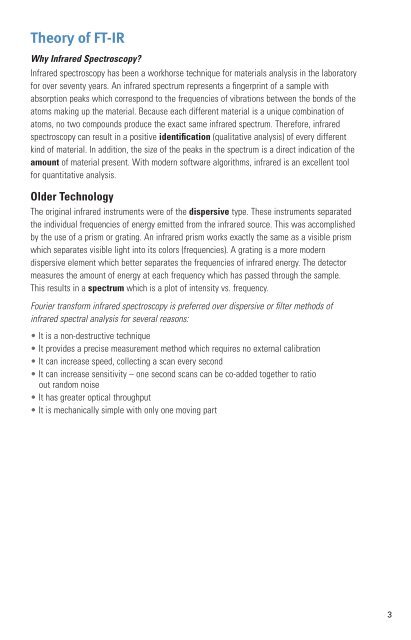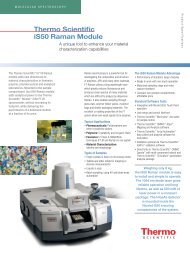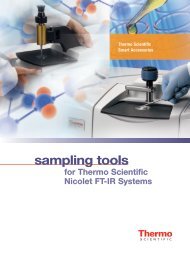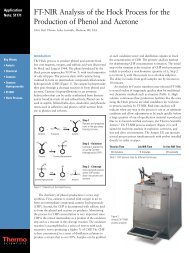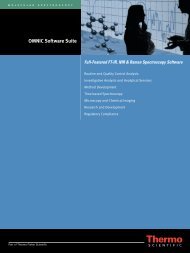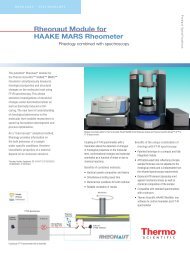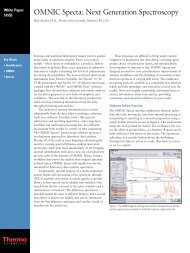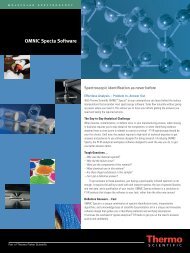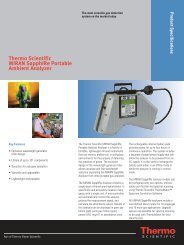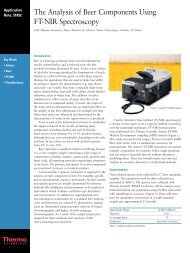Introduction to Fourier Transform Infrared ... - Nicolet CZ sro
Introduction to Fourier Transform Infrared ... - Nicolet CZ sro
Introduction to Fourier Transform Infrared ... - Nicolet CZ sro
Create successful ePaper yourself
Turn your PDF publications into a flip-book with our unique Google optimized e-Paper software.
Theory of FT-IRWhy <strong>Infrared</strong> Spectroscopy?<strong>Infrared</strong> spectroscopy has been a workhorse technique for materials analysis in the labora<strong>to</strong>ryfor over seventy years. An infrared spectrum represents a fingerprint of a sample withabsorption peaks which correspond <strong>to</strong> the frequencies of vibrations between the bonds of thea<strong>to</strong>ms making up the material. Because each different material is a unique combination ofa<strong>to</strong>ms, no two compounds produce the exact same infrared spectrum. Therefore, infraredspectroscopy can result in a positive identification (qualitative analysis) of every differentkind of material. In addition, the size of the peaks in the spectrum is a direct indication of theamount of material present. With modern software algorithms, infrared is an excellent <strong>to</strong>olfor quantitative analysis.Older TechnologyThe original infrared instruments were of the dispersive type. These instruments separatedthe individual frequencies of energy emitted from the infrared source. This was accomplishedby the use of a prism or grating. An infrared prism works exactly the same as a visible prismwhich separates visible light in<strong>to</strong> its colors (frequencies). A grating is a more moderndispersive element which better separates the frequencies of infrared energy. The detec<strong>to</strong>rmeasures the amount of energy at each frequency which has passed through the sample.This results in a spectrum which is a plot of intensity vs. frequency.<strong>Fourier</strong> transform infrared spectroscopy is preferred over dispersive or filter methods ofinfrared spectral analysis for several reasons:• It is a non-destructive technique• It provides a precise measurement method which requires no external calibration• It can increase speed, collecting a scan every second• It can increase sensitivity – one second scans can be co-added <strong>to</strong>gether <strong>to</strong> ratioout random noise• It has greater optical throughput• It is mechanically simple with only one moving part3


